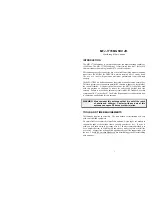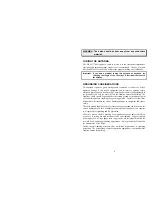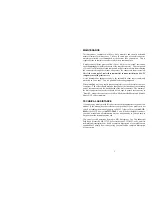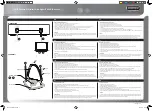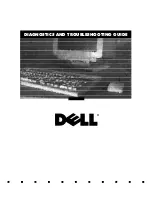
5
MAINTENANCE
This antenna is constructed of heavy duty materials and should withstand
normal climates for many years. The use of some type of coaxial connector
moisture protection is recommended at the bottom coax connection. This is
especially true in coastal areas where salty mist is commonplace.
E makes a pure silicone grease called "
silicone dielectric compound
" that can be
applied
sparingly
to the threaded area of the female connector. This compound,
or even a clear silicone heat sink compound, will prevent moisture from entering
the connector through the threads and protect the connectors from corrosion.
This is the same type of sealer that commercial antenna installers and CATV
companies use with great success
.
A less desirable but adequate sealer is the automobile seam sealer commonly
marketed as "coax seal". This is a pliable black sealing compound.
When installing any coax sealer,
never
completely cover the barrel of the coax
connector. The sealer should
only
be placed near the junction of the threaded
part of the connector and the knurled area of the male connector. The bottom of
the male connector's outer sleeve should be left open to permit the connector to
"breathe". Mount the connector vertically with the unsealed barrel end down so
it does NOT collect moisture!
TECHNICAL ASSISTANCE
If you have any problem with this unit first check the appropriate section of this
manual. If the manual does not reference your problem or your problem is not
solved by reading the manual you may call
MFJ Technical Service
at
662-323-
0549
or the
MFJ Factory
at
662-323-5869
. You will be best helped if you have
your unit, manual and all information on your station handy so you can answer
any questions the technicians may ask.
You can also send questions by mail to MFJ Enterprises, Inc., 300 Industrial
Park Road, Starkville, MS 39759; by Facsimile to 662-323-6551; or by email to
techinfo@mfjenterprises.com. Send a complete description of your problem, an
explanation of exactly how you are using your unit, and a complete description
of your station.

